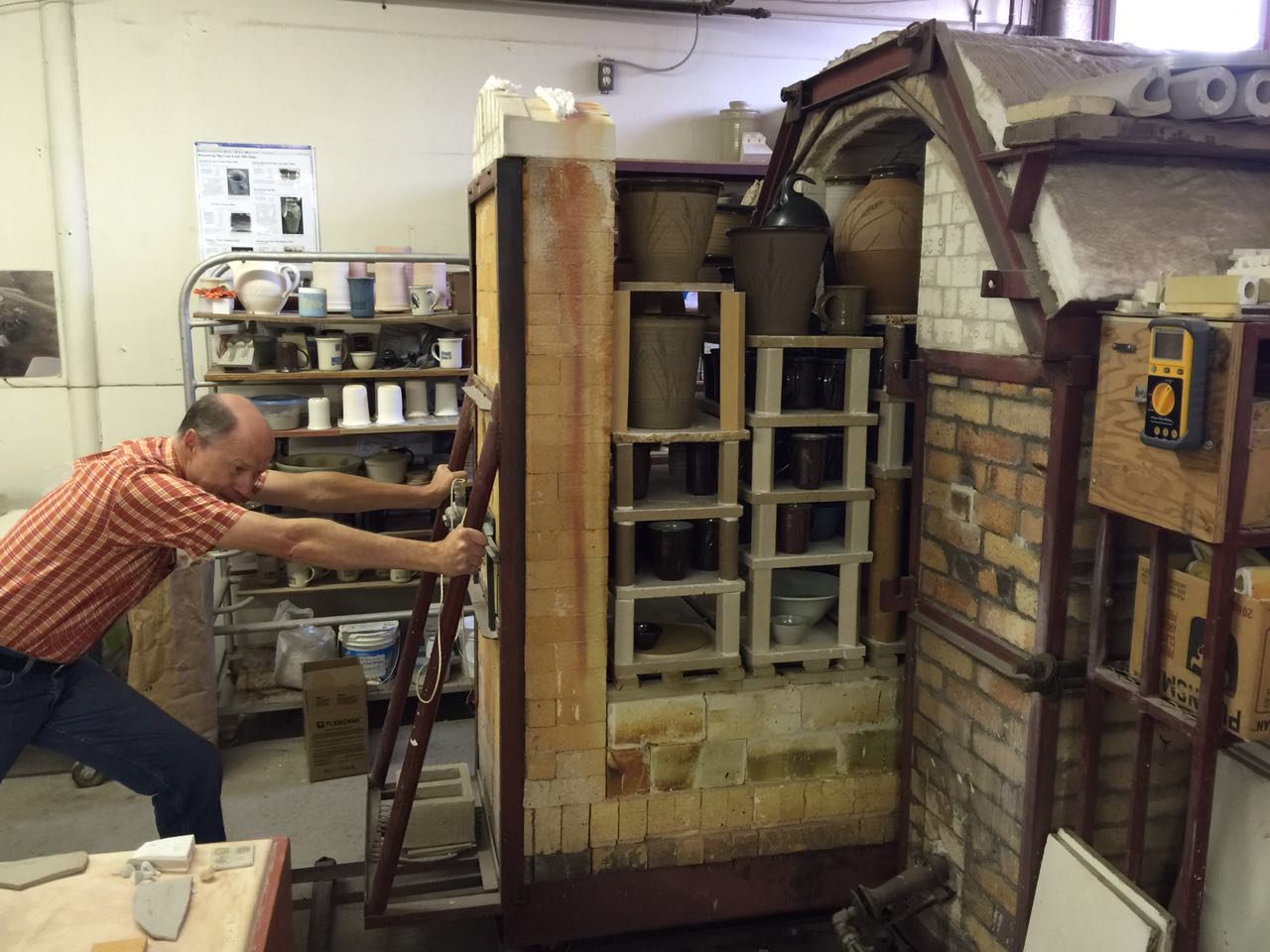| Monthly Tech-Tip | No tracking! No ads! |
Why does Tony Hansen take months to unload his kilns?
I love making pottery, but I love the technical side more. I searched for all the test specimens in this 2020 load of cone 10 reduction ware first, then pushed it back in and forgot about it. For three months! I really anticipate the test results (I am developing and adjusting many of bodies and glazes at any given time). The data and pictures for them go into my account at insight-live.com, it enables me to compare the chemistry and physical properties of recipes and materials side-by-side. That teaches me which roads to abandon and which ones to pursue. My last kiln went back in for six weeks, so things are getting worse! If you are wondering, we use the C10RPL firing schedule.
Related Pictures
The recipe mixing area in the Plainsman Clays lab

This picture has its own page with more detail, click here to see it.
This is my lab work area of mineral, frit, chemical, stain and metal oxide powders for mixing test glazes and clay bodies. Not shown is my propeller mixer, perhaps the most important piece of equipment we have. And my plaster table for dewatering clay body slurries. Building up something like this, over time, is practical for any serious potter, most of these powders are inexpensive. Within minutes I can plan and enter a recipe into my Insight-live.com account, give it a code number, print it and weight it out.
Videos
Links
| Glossary |
Tony Hansen
Tony Hansen is the author of Digitalfire Insight, Digitalfire Reference Library and Insight-Live.com, he is a long-time potter, ceramic lab-technician and body and glaze developer. |
Got a Question?
Buy me a coffee and we can talk

https://digitalfire.com, All Rights Reserved
Privacy Policy

